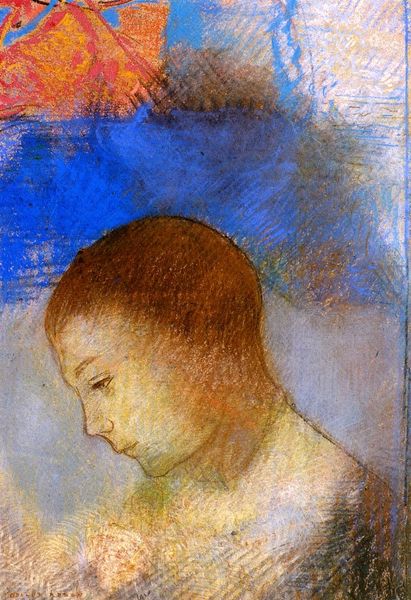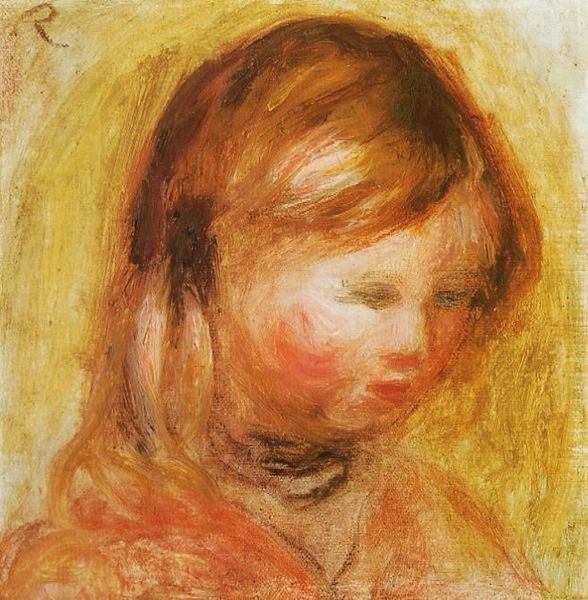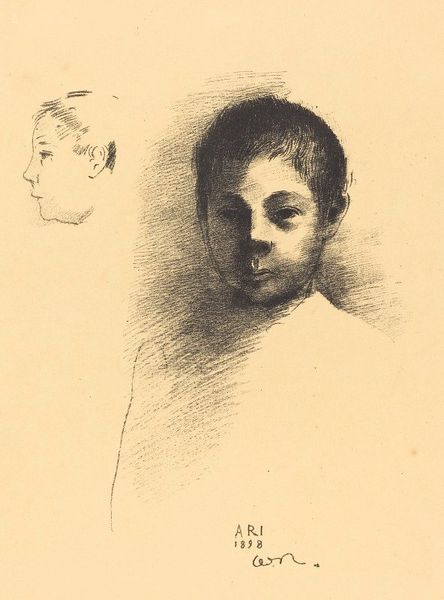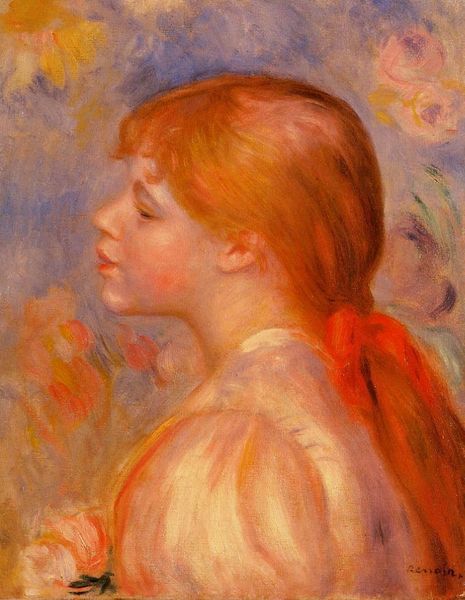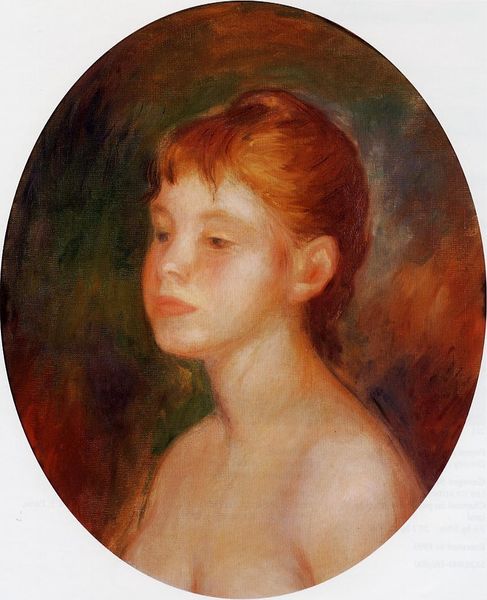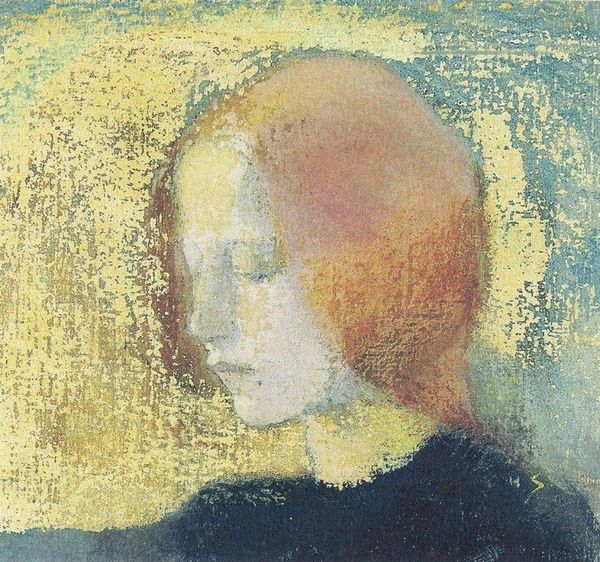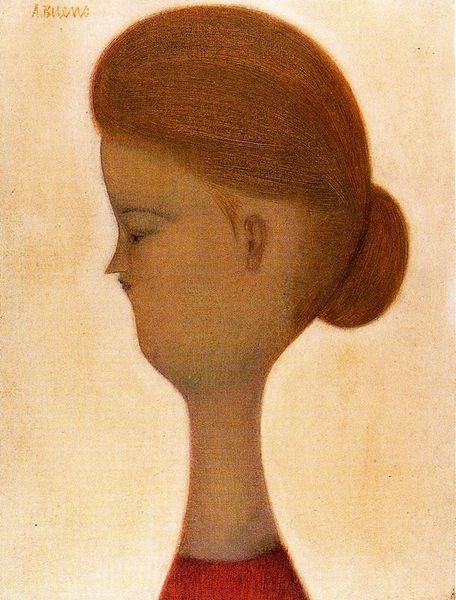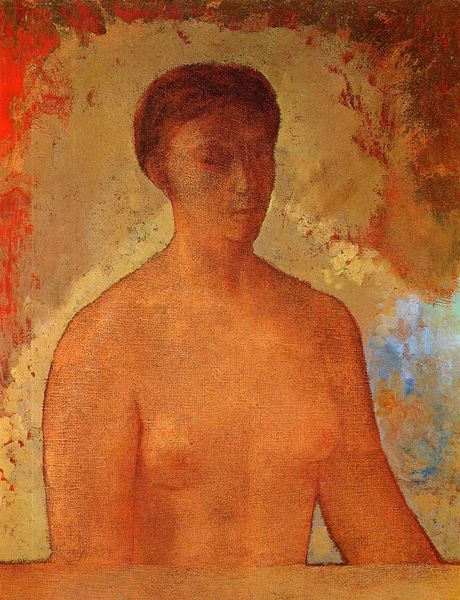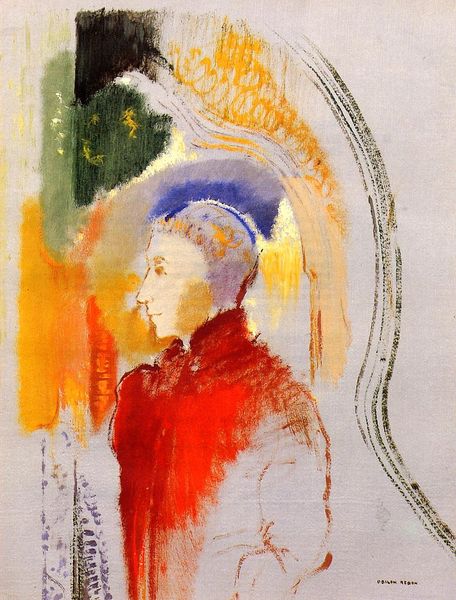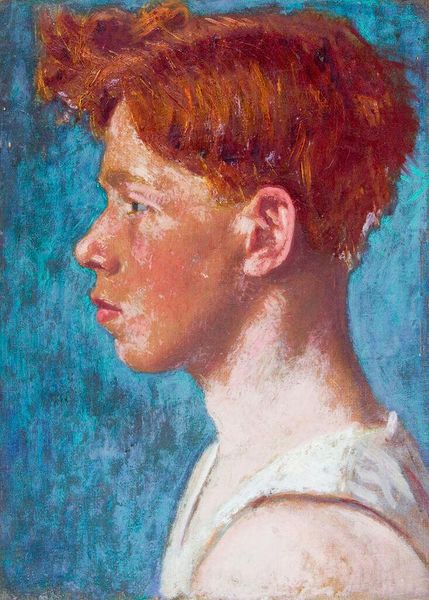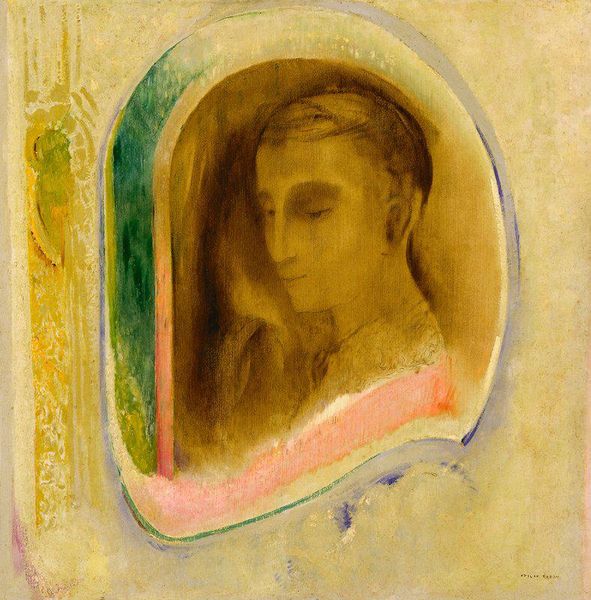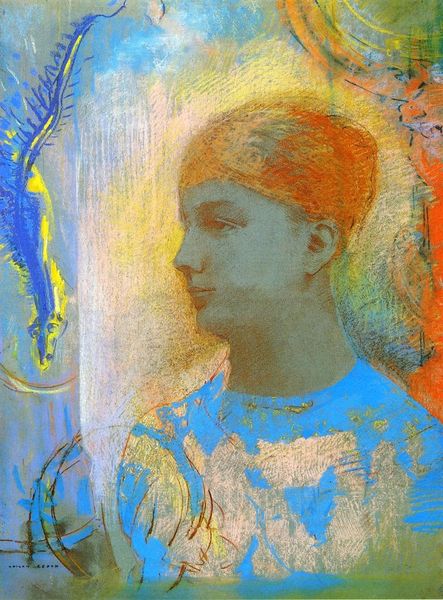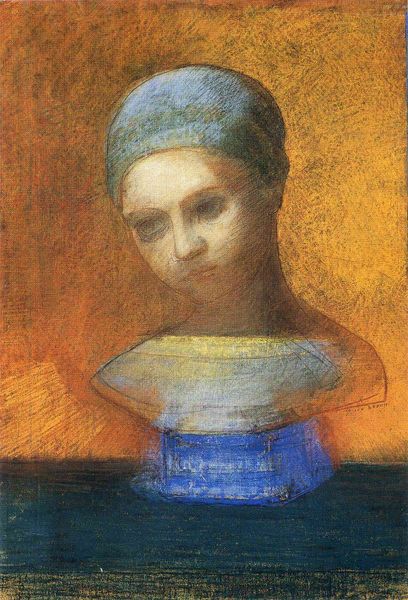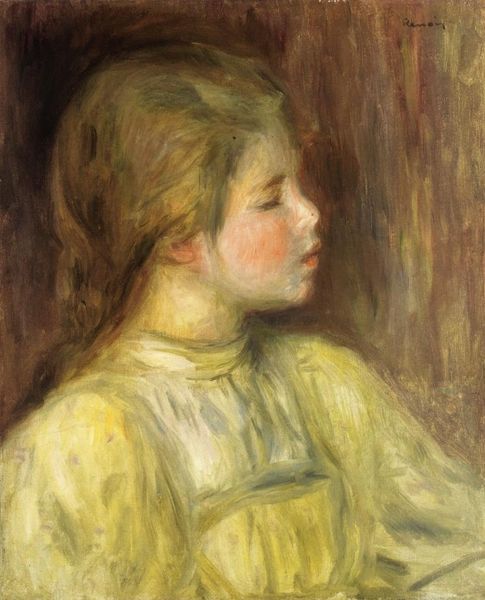
drawing, paper, pastel
#
portrait
#
drawing
#
charcoal drawing
#
figuration
#
paper
#
pastel chalk drawing
#
symbolism
#
portrait drawing
#
pastel
Copyright: Public domain
Editor: So, this is "Portrait of the Son of Robert de Comecy" by Odilon Redon, created around 1898. It's a drawing, probably pastel and charcoal on paper. It strikes me as very gentle, almost dreamlike, but there’s a definite melancholic feel to it, wouldn’t you agree? How do you interpret this work? Curator: I find Redon's choice of pastel and charcoal, particularly in rendering the young boy, fascinating. Notice how he doesn't quite commit to sharply defined features. There's a soft blurring, a kind of symbolic haziness. Pastel, as a medium, lends itself beautifully to fleeting moments, memories, things that are about to fade or shift, which complements the artist's symbolism. How might this "haziness" relate to childhood itself? Editor: Well, childhood is definitely a fleeting state… a transition. Curator: Precisely! And in the Symbolist movement, childhood became a recurring symbol. Often a nostalgic longing for innocence or a space to project fears or anxieties around cultural change. Redon captures this idea beautifully, almost elevating the young subject into an emblem, like the ideal child, the hope of generations to come. What do you notice in the colour palette that supports the "gentle" mood? Editor: The ochres and yellows are definitely soft and warm, they contrast with a slightly somber expression, but they help communicate tranquility rather than sadness. Curator: It's this very interplay between gentle color and delicate blurring that contributes to the portrait's resonance. Redon uses these features to tap into universal emotions linked to transition, memory, and hope, don't you agree? It isn't just about capturing a likeness. He is trying to get to the deeper psychological aspects. Editor: Absolutely! It’s more than just a picture, it’s an idea of childhood, represented in an aesthetic way. Thanks!
Comments
No comments
Be the first to comment and join the conversation on the ultimate creative platform.
